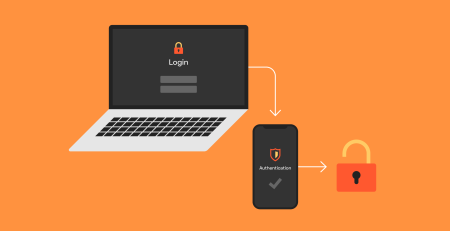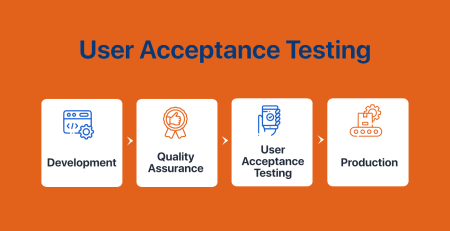Getting Start with Penetration Testing
What Is Penetration Testing?
Penetration testing is the technique of checking and testing an organization’s network, servers, and services for probable flaws and vulnerabilities that an attacker could exploit.
White hat penetration testers are a type of penetration tester. They hack in an ethical manner, inflicting no damage to the computer system, thereby enhancing your organization’s security perimeter.
What Is The Purpose Of Penetration Testing?
Penetration testing is essential because it aids in the identification of weaknesses in hardware and software system design and operation, as well as, more crucially, employee readiness. Early detection aids in network security. If the flaws aren’t found early on, the attacker will have an easy time breaking in.
Hacking Vs Penetration Testing (Ethical Hacking)
Exploiting system vulnerabilities and circumventing security restrictions to get unauthorised or improper access to system resources is referred to as hacking. It entails altering the characteristics of a system or application to achieve a goal other than the creator’s original intent.
Ethical hacking entails identifying vulnerabilities using hacking tools, methods, and procedures in order to ensure system security. It focuses on emulating attacker approaches for determining the presence of exploitable flaws in system security.
The Business Case
If you wish to achieve the following objectives, penetration testing is a good idea:
- identify the threats facing an organization’s information assets;
- reduce the organization’s IT security costs and provide a better Return On Security Investment (ROI);
- provide the organization with assurance: a thorough and comprehensive assessment of organizational security covering policy, procedure, design, and implementation;
- gain and maintain certification to an industry regulation;
- adopt best practices by conforming to legal and industry regulations;
- test and validate the efficiency of security protections and controls. May lead to changing or upgrading the existing infrastructure of software, hardware, or network design;
- evaluate the efficiency of network security devices such as firewalls, routers, and web servers;
- focus on high-severity vulnerabilities and emphasize application-level security issues to development teams and management;
- provide a comprehensive approach of preparation steps that can be taken to prevent upcoming exploitation.
Penetration Test Types
One of the most prevalent types of penetration tests is the Network Services Test. It entails locating target systems on the corporate network, probing for and exploiting flaws in their base operating systems and network services. Some of these tests are conducted remotely over the Internet and are aimed at the company’s perimeter networks. Others are launched locally, from the target’s own company facilities, to analyse the security of their internal network or DMZ from the inside, looking for the kinds of flaws that an inside user may detect.
Web Application Test: Looks for security flaws in web-based apps and/or programs that have been deployed, installed, operationalized, and are now executing on the target environment and resources.
Wireless Security Test: This involves looking around a target’s physical environment for unwanted wireless access points, as well as authorized wireless access points with security flaws or other concerns.
The goal of a social engineering test is to persuade a user to give sensitive information such as a password or other sensitive data. These tests are frequently conducted over the phone, with specific help desks, users, or personnel being targeted, with processes, procedures, and user awareness and reaction preparedness being evaluated.
How Is It Done?
During penetration testing, a pentester examines all of the organization’s current security mechanisms, looking for design flaws, technological flaws, and other critical or specified by the organization’s decision-makers vulnerabilities. Penetration testing can be done in three different ways:
- Black Box testing – simulates an attack from someone who is unfamiliar with the system, establishing externally “available” backdoors or other perimeter-breach opportunities.
- Grey Box testing – simulates an attacker that has partial knowledge about the system.
- White Box testing – simulates an attacker that has knowledge about the system.
After all of the tests have been completed, the pen tester creates a detailed report that includes the following information:
- tests conducted;
- test results;
- testing methodology;
- all vulnerabilities found;
- respective countermeasures.
Finally, the pentester distributes the report to all authorized audiences, including the executive, management, technical, and other audiences.
Aside from typical scenarios based on the type of Pentesting (white box, grey box, black box) and territory (network, application, wi-fi, etc. ), it’s a good idea to build and deploy scenarios that are specific to your environment and information threats. For example, the notion can be tweaked to reflect the potential conduct of a certain sort of offender that you care about, based on a variety of beginning points:
- Externally located person: has no initial knowledge of your infrastructure. They start by going to the coffee shop next to your office, and commence hacking…
- Your own employee: usually receives standard pre-configured IT tools (laptop, tablet, phone, etc.) and human access – email, corporate portal, etc. Testing can show you how far such person can go with these tools and what possible damage they can inflict.
- Your business partner: has access to your ERP system, service provisioning team, etc. Again, testing will evaluate how much this person can roam around and beyond their authorized access, and what they can inflict.
- Any other starting point that is important to you in relation to your business operations.
For each starting point, your testing vendor should be able to, on your command, apply all types and variations of pentesting.
Process Of Penetration Testing
The course of Penetration testing involves defining the Scope, signing an Agreement, and working on Recommendations.
Establish Scope
Determine which important systems will be tested and prepared for attack mitigation in the event of an assault. The scope might be specified by an external certification or compliance requirement (for example, the PCI DSS) or simply by what management has decided to achieve acceptable security assessment.
Sign Agreement
A written declaration of intent and agreement to do testing according to the scope, timeline, and manner specified. The study is followed by a detailed analysis on the risks that information systems face, which gives the essential understanding and assistance to ensure that operations are secure.
Receive Report
To go on to the next phase, you’ll need to examine the report with test findings and offered recommendations, filter through risk management procedures, and follow up with suitable governance or integration efforts.













Leave a Reply